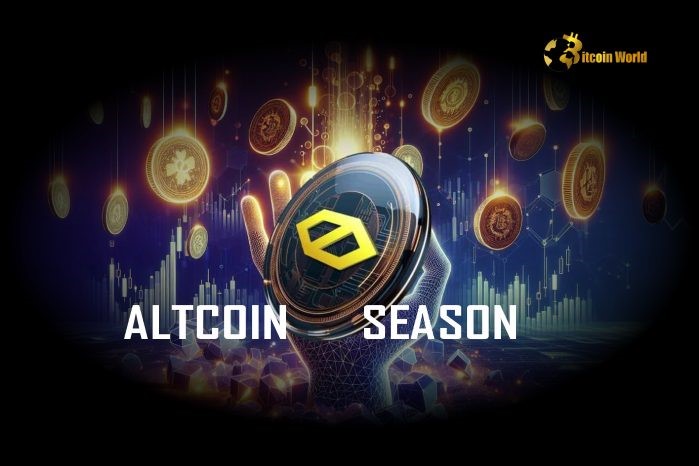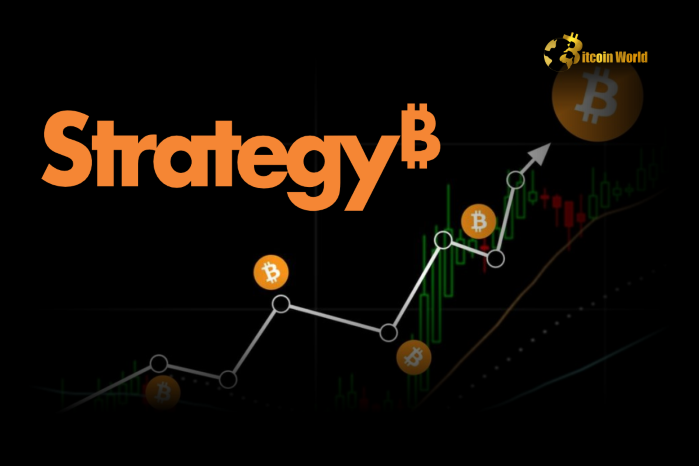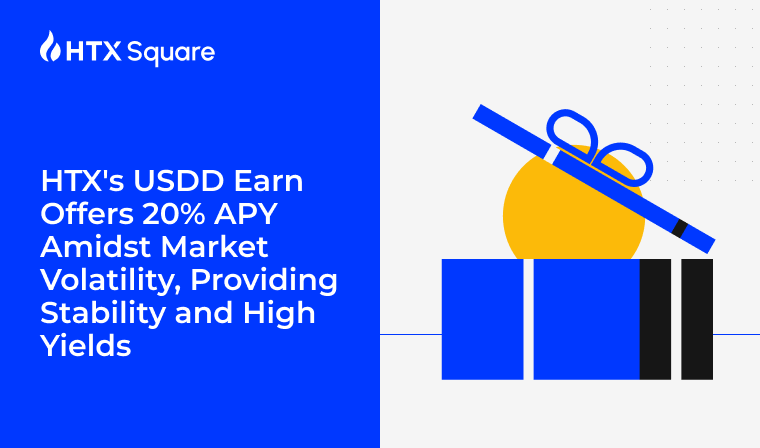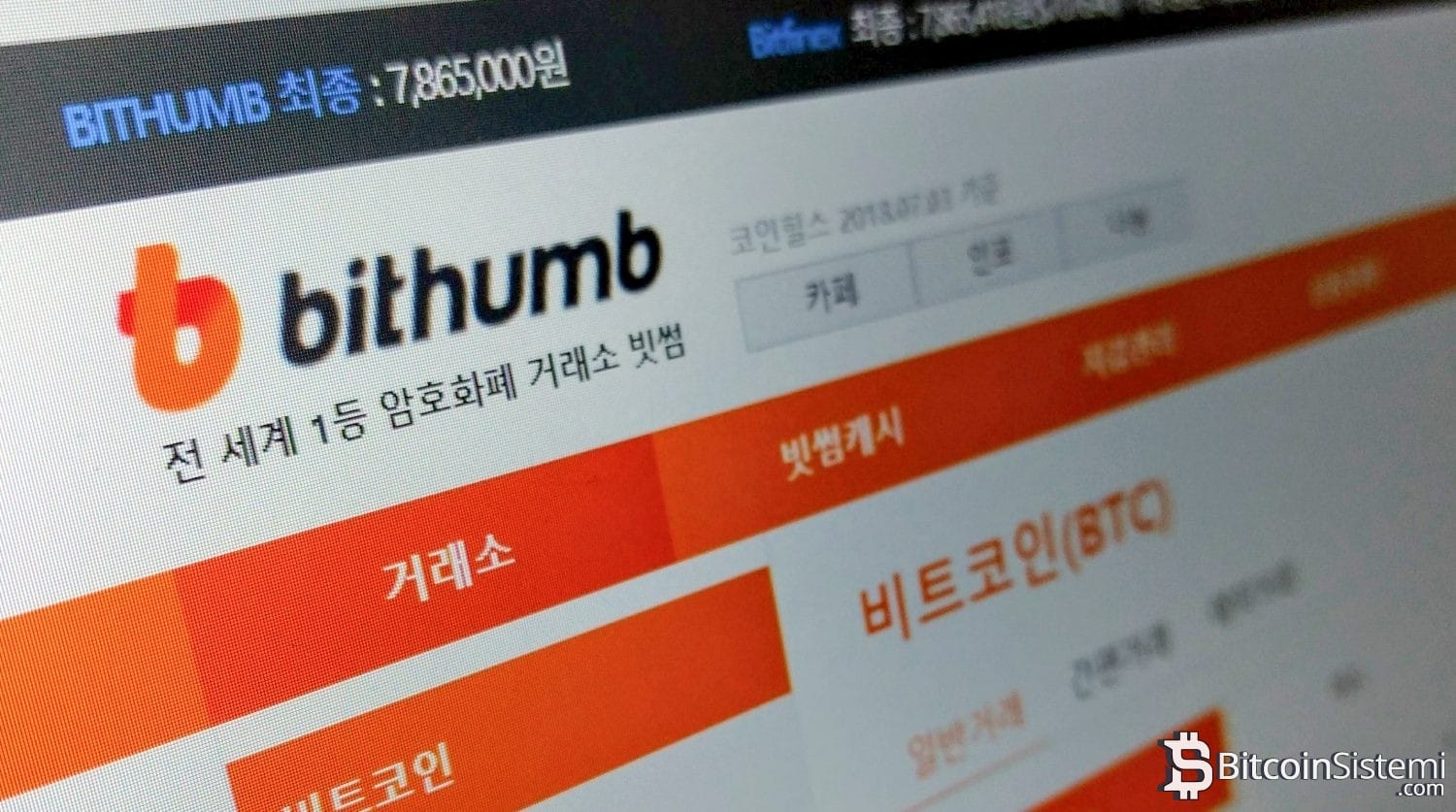
Cardano (ADA) has witnessed a major sell-off by large holders, with over 170 million tokens being offloaded. This sell-off led to a drop in total whale holdings from 3.26 billion ADA to 2.98 billion ADA, aligning with a price decline from $0.83 to $0.65. The move suggests bearish sentiment among major investors, possibly anticipating further … Continue reading "Cardano Whales Dump 170M Tokens as Price Drops to $0.65" The post Cardano Whales Dump 170M Tokens as Price Drops to $0.65 appeared first on Cryptoknowmics-Crypto News and Media Platform .
Cryptoknowmics
You can visit the page to read the article.
Source: Cryptoknowmics
Disclaimer: The opinion expressed here is not investment advice – it is provided for informational purposes only. It does not necessarily reflect the opinion of BitMaden. Every investment and all trading involves risk, so you should always perform your own research prior to making decisions. We do not recommend investing money you cannot afford to lose.
Bybit Hacker’s Money Laundering Boosts THORChain with $2.91 Billion in Transaction Volume and $3 Million in Fees

In a series of events that has drawn the eyes of the crypto world, THORChain has seen a wild explosion in transaction volume and fee income—all due to a money laundering operation associated with a hack on Bybit, one of the major cryptocurrency exchanges. The hacker who pulled off the Bybit breach has been busy using THORChain to launder his stolen funds, and this copious amount of activity has made its way into the THORChain books. So much so that it has effectively doubled the decentralized exchange’s transaction volume. You’d think this is a pretty good ad for THORChain. Too bad it is all because of the work of a criminal. Massive Surge in Transaction Volume and Fees THORChain averaged $80 million in daily transactions before a hacker began to tunnel dirty money through the protocol. On February 22, 2025, the hacker set upon a not uncommon technique in the world of crypto for obscuring the provenance of stolen funds: using a decentralized exchange (in this case, THORChain) to swap the ill-gotten Ethereum for quieter Bitcoin. In total, THORChain saw a staggering $2.91 billion hit its smart contracts in just five days. This was obviously a huge amount of not good. What followed was obvious and unavoidable in the context of “decentralized finance”—THORChain began using THORChain to swap otherwise silent Bitcoin for, at a guess, stealthy Ethereum. Remedial measures then had to ensue. The crypto community is not the only one taking notice of the rapid rise in transaction volume; it has also brought in serious cash for THORChain. The impetus behind all the activity may not be entirely above board, but the decentralized platform is certainly profiting from the upturn in business. The volume translated into income: about $3 million for the almost $3 billion worth of transactions. The money came in the form of fees for executing trades between different cryptocurrencies across THORChain’s decentralized exchange. Bybit 被盗事件的赢家除了黑客,就是 @THORChain 了:黑客洗钱为 THORChain 带来了 $29.1 亿的交易量跟 $300 万的手续费收入。 Bybit 黑客的主要洗钱方式是通过 @THORChain 将 ETH 兑换成 BTC。这为 THORChain 带来了巨量的交易量跟手续费。同时也带动了 THORChain 的代币 $RUNE 上涨。… https://t.co/952qqgyuoN pic.twitter.com/QV3BPWoDqC — 余烬 (@EmberCN) February 27, 2025 Although these increased fees benefit THORChain, the transactions’ nature—due to a hack—brings up significant ethical and legal problems. Regardless, THORChain has gained a substantial amount of revenue and is seeing significant user metric increases. Price Impact on $RUNE THORChain’s native token, $RUNE, has also been affected by the increase in transaction volume and, with it, handling fees. Demand has surged for $RUNE. Why? Because with platform activity booming, $RUNE has been in demand—driving up its price. Increased usage of a platform often correlates directly with demand for its token. Tokenomics 101. In this case, the operation led by THORChain laundered a lot of money poured into the THORChain token through Crypto1555 and other backdoor schemers. Illicit activity around THORChain underscores the uptick in THORChain token price. It offers cover to THORChain developers and insiders who benefit every time the token THORChain is hiked. Volatility is not our friend. Long-term, we suspect this is not sustainable. For THORChain, this may short-term financial success, but it could also bring unwanted regulatory eyes when the platform is already under close watch by regulators concerned its potential role in illegal activities. If involved in a money laundering scheme, and even if it is not intentional, could put THORChain right under the noses of plenty of law enforcement and financial regulators across the world. Ethical Concerns and Legal Risks The hacker is apparently using THORChain to do these illicit things, and it’s making THORChain a little dirty in the public eye. 1. In the case of BTC, it is a common perception that those who hold, use, or convert BTC in any form are at risk of making their funds illegal. 2. Murphy’s law would suggest that those fears are enough to make BTC holders, users, converters, or cashers susceptible to being seen as having illegal funds. 3. Even if they don’t and end up being doxxed, BTC converts who don’t THORChain think are guilty of using a way to handle stolen funds that is no different from what hallowed hacker and cryptocurrency saint Julian Assange has long been alleged to do. This development has shone a light on how illicit actors can use decentralized exchanges like THORChain. Centralized exchanges must follow strict Know Your Customer (KYC) and Anti-Money Laundering (AML) regulations, but decentralized exchanges are often much less regulated. Even this is an understatement because it is not clear that they are regulated at all. The recent Unsolvable Problem hack raises the more general question of how we should regulate all these canyoneering, rapids-rushing, tokencrazy places where money can just disappear. For THORChain, this involvement raises the crucial issue of whether the platform will suffer any legal or reputational harm. THORChain may not have had the slightest clue that laundering was going on, but it’s still a possible fallout from association with illegal activity. Ignorance on the part of the platform is sometimes, albeit rarely, an effective defense in criminal cases. But going forward, in a maturing crypto market, platforms like THORChain may be pressured to tighten up their oversight and security afoul of which may endanger their own unsuspecting customers. Conclusion: Short-Term Gains, Long-Term Challenges The decentralized exchange has experienced a sudden and dramatic increase in both transaction volume and fee income, thanks to the recent Bybit hack and the laundering of funds through THORChain. In just five days, THORChain saw $2.91 billion worth of transactions and generated $3 million in fees. The hack’s fallout has also sent the price of $RUNE “to the moon” and has benefited THORChain holders in the short term. Involvement in a high-profile hack brings up significant ethical and legal problems that could have serious ramifications for a long time. Even though THORChain might financially gain from all the extra traffic and trading that’s now going on, it is also under a much tighter spotlight from regulators and law enforcement, and what they’re saying now could lead to serious and “lengthy” challenges later on. And how they deal with these challenges will either salvage or seriously tarnish their long-term reputation and viability. Disclosure: This is not trading or investment advice. Always do your research before buying any cryptocurrency or investing in any services. Follow us on Twitter @nulltxnews to stay updated with the latest Crypto, NFT, AI, Cybersecurity, Distributed Computing, and Metaverse news ! Image Source: loft39studio/ 123RF // Image Effects by Colorcinch Cryptoknowmics

Decoding Crypto: Altcoin Season Index Signals Bitcoin Season Dominance
Navigating the volatile world of cryptocurrency requires more than just luck; it demands understanding market indicators. One such crucial indicator is the Altcoin Season Index . Currently, this index, a key metric for gauging the prevailing sentiment in the crypto space, stands at 22. What does this number signify for your crypto portfolio, and are we truly in a Bitcoin Season ? Let’s dive deep to decode this. What is the Altcoin Season Index and How Does it Work? The Altcoin Season Index , meticulously tracked by CoinMarketCap (CMC), is not just another number; it’s a compass for navigating the crypto market’s ever-shifting tides. Think of it as a barometer, measuring the comparative strength of altcoins against Bitcoin. But how exactly does this index work its magic? Here’s a breakdown: Data Source: The index analyzes the top 100 cryptocurrencies listed on CoinMarketCap, excluding stablecoins and wrapped tokens to provide a pure representation of market dynamics. Performance Window: It assesses the performance of these 100 coins over the past 90 days, offering a medium-term perspective on market trends rather than short-lived pumps and dumps. Bitcoin as the Benchmark: The core of the index lies in comparing altcoin performance against Bitcoin. Bitcoin, as the original and still dominant cryptocurrency, serves as the yardstick. The 75% Threshold: This is the magic number. For the market to be officially declared in ‘Altcoin Season’, at least 75% of the top 100 altcoins must have outperformed Bitcoin over the last 90 days. Index Range: The index score ranges from 1 to 100, providing a granular view of market sentiment. A higher score leans towards Altcoin Season, while a lower score indicates Bitcoin’s dominance. In essence, the Altcoin Season Index simplifies a complex market into a single, digestible metric, helping traders and investors understand whether the market is favoring Bitcoin or altcoins . Bitcoin Season vs. Altcoin Season: What’s the Difference? Understanding the difference between Bitcoin Season and Altcoin Season is crucial for strategic crypto investing. It’s not just about which coins are going up or down, but about broader market trends and capital flows. Feature Bitcoin Season Altcoin Season Market Dominance Bitcoin outperforms most altcoins. Capital tends to flow into Bitcoin, often seen as a ‘safer’ crypto asset. Altcoins outperform Bitcoin. Investors are more willing to take risks and explore higher-growth potential in altcoins. Altcoin Season Index Value Index value is low, typically below 25. The current index at 22 firmly places us in Bitcoin Season. Index value is high, ideally 75 or above. This indicates a broad-based altcoin rally. Investor Sentiment Risk-off sentiment. Investors prioritize safety and established cryptocurrencies like Bitcoin. Risk-on sentiment. Investors are more adventurous, seeking higher returns in the diverse altcoin market. Market Action Bitcoin price may rise significantly, or at least hold its value better than altcoins. Altcoins may stagnate or decline in BTC terms. Many altcoins experience significant price surges, often outperforming Bitcoin by a considerable margin. Currently, with the Altcoin Season Index at 22, we are clearly in Bitcoin Season . This means that over the last 90 days, Bitcoin has generally outperformed the vast majority of altcoins in the top 100. Why is the Altcoin Season Index at 22? Decoding the Current Crypto Market The index reading of 22 isn’t just a random number; it’s a reflection of the current state of the crypto market . Several factors can contribute to a prevailing Bitcoin Season : Market Uncertainty: During times of economic or geopolitical uncertainty, investors often flock to Bitcoin as a perceived ‘safe haven’ within the crypto space. This increased demand drives up Bitcoin’s price relative to altcoins . Bitcoin Halving Cycles: Historically, Bitcoin halvings have been followed by periods of increased Bitcoin dominance. Anticipation or immediate aftermath of a halving can strengthen Bitcoin Season . Institutional Investment Flow: Large institutional investors often start by investing in Bitcoin before diversifying into altcoins . Initial institutional inflows predominantly benefit Bitcoin. Regulatory Landscape: Positive regulatory news for Bitcoin, or negative news impacting the broader crypto market (especially altcoins ), can strengthen Bitcoin’s position. Narrative and Media Attention: Mainstream media coverage often focuses on Bitcoin, especially during bull runs or market corrections. This attention can draw new investors primarily to Bitcoin. It’s important to remember that the crypto market is dynamic. A Bitcoin Season doesn’t last forever, and market conditions can shift rapidly. Understanding the underlying reasons for the current index reading helps in making informed investment decisions. Navigating Bitcoin Season: Strategies and Insights So, what should you do when the Altcoin Season Index points to Bitcoin Season ? Here are some actionable insights: Re-evaluate Your Portfolio: Consider if your portfolio is appropriately weighted for a Bitcoin Season . Are you overexposed to altcoins that might underperform Bitcoin in the current market? Focus on Bitcoin Fundamentals: During Bitcoin Season , it’s a good time to research and understand Bitcoin’s fundamentals, technological advancements, and adoption metrics. Identify Strong Altcoins: Not all altcoins are created equal. Even in a Bitcoin Season , some fundamentally strong altcoins with solid use cases and active development may hold their value or even outperform. Research and identify these gems. Dollar-Cost Averaging (DCA) into Bitcoin: If you believe in the long-term potential of Bitcoin, Bitcoin Season can be an opportune time to DCA, accumulating more Bitcoin at potentially favorable prices compared to altcoins . Monitor the Index: Keep a close eye on the Altcoin Season Index . A rising index might signal a shift towards Altcoin Season, prompting you to adjust your strategy accordingly. However, it’s equally important to be aware of the challenges: Market Volatility: The crypto market is inherently volatile. Even during Bitcoin Season , sudden shifts can occur, impacting both Bitcoin and altcoins . False Signals: While the Altcoin Season Index is a valuable tool, it’s not foolproof. It’s just one indicator among many and should be used in conjunction with other analysis methods. Opportunity Cost: Focusing solely on Bitcoin during Bitcoin Season might mean missing out on potential gains in select altcoins that buck the trend. The Future of Altcoin Season Index and Crypto Market Dynamics The Altcoin Season Index provides a valuable snapshot of the current market sentiment, highlighting the ebb and flow between Bitcoin dominance and altcoin surges. As the crypto market matures, and new narratives emerge, understanding these cyclical patterns becomes even more critical for investors. Will the index remain at 22, solidifying Bitcoin Season further? Or will we see a shift towards altcoins in the near future? The answer lies in the evolving dynamics of the crypto market , influenced by technological advancements, regulatory developments, and global economic factors. Staying informed and adaptable is key to navigating this exciting, yet complex landscape. In conclusion, the Altcoin Season Index at 22 is a clear signal: we are currently in Bitcoin Season . This doesn’t mean altcoins are irrelevant, but it does suggest a period where Bitcoin is likely to lead the market. By understanding this indicator and adapting your strategies accordingly, you can navigate the crypto market with greater confidence and potentially optimize your portfolio for the prevailing conditions. To learn more about the latest crypto market trends, explore our article on key developments shaping Bitcoin price action. Cryptoknowmics











